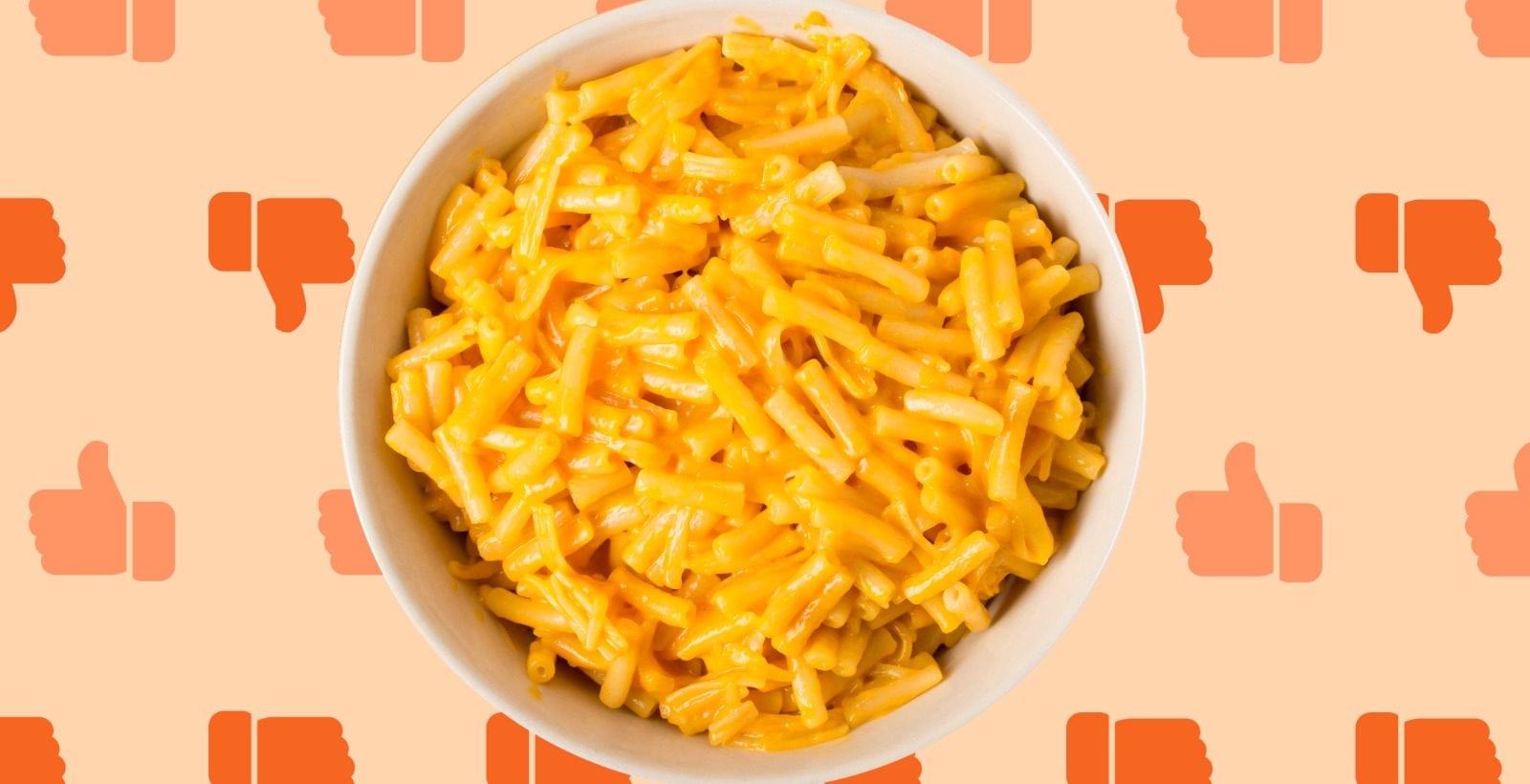It may have been a staple at your house growing up. So it’s good to know that Kraft Mac and Cheese, all things considered, has been labeled “not that bad,” health-wise. It’s not like the world would ever stop eating it, but at least the guilt we all have when it suddenly becomes a last-minute dinner will lessen a little bit.
There are a million reasons why it’s safe to assume that Kraft Mac and Cheese is awful for you. For one, the powder. Usually, if something starts out in powder form, it’s a red flag that it’s not a very good dietary choice. Also, like all versions of mac and cheese, there’s not much to it. Just, you know, noodles, cheese, butter, and milk. No protein or vegetables, which a nutritionist or your doctor would most likely recommend you try to eat for dinner.
Unless you add peas in there, or maybe try to hide some spinach, what you see is what you get. A heavy carb and a glop of liquified artificial cheese. (That is, unless your preferred version is made from scratch.)
Even though it’s best as a side outside of our dorm years, just know that you’re not eating a total bowl full of chemicals every time it becomes the main course. Extra Crispy looked intowhat that yellow cheese flavoring packet was all about, and it turns out that Kraft is trying hard to avoid the scary ingredients.
Per the site, the powder mostly consists of milk products and byproducts. Is it better than the real thing? Of course not. But it’s not filled with chemicals that might make you sick when consumed in high doses. It doesn’t even include artificial dyes.
Itdoescontain a lot of salt, so if you’re trying to restrict salt, Kraft Mac and Cheese might not be your best bet. But since that adds to that nostalgic flavor, I think we can forgive Kraft for that.






